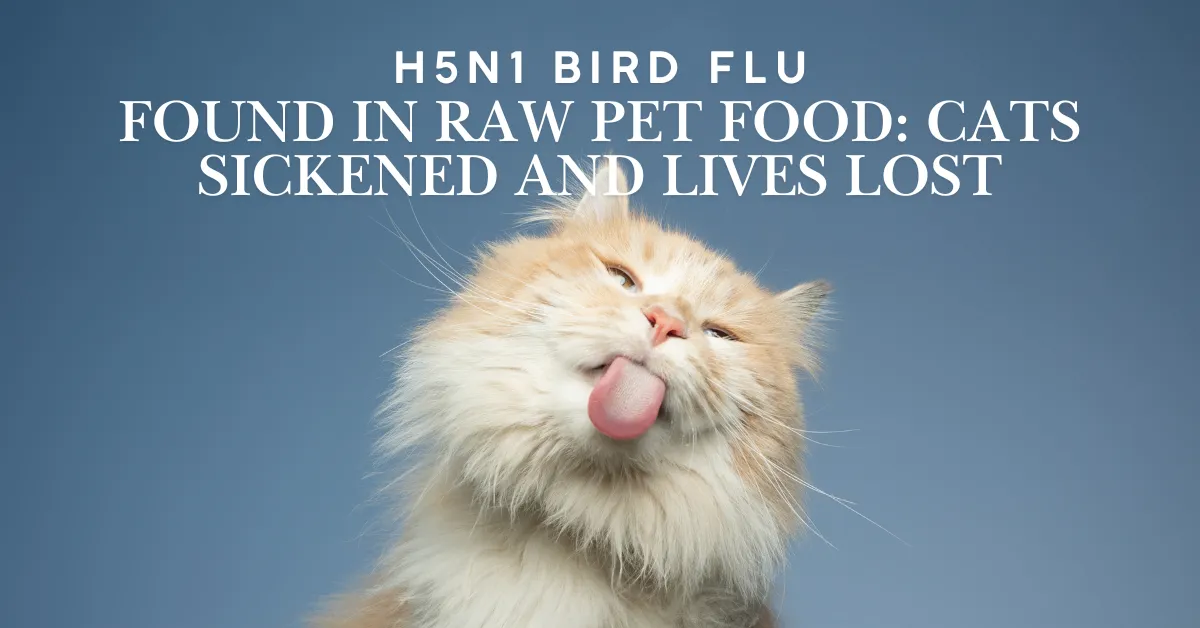The news is heartbreaking for pet lovers everywhere. According to the FDA, over a dozen cats have fallen seriously ill, and many have died due to bird flu contamination in raw pet food. Yes, you read that right—bird flu, or H5N1 avian influenza, has made its way into the pet food supply, causing an outbreak that has left cat owners devastated and experts concerned.
What Happened?
It started with reports of sick cats across multiple states, including both domestic pets and exotic cats in sanctuaries. After investigations, the FDA identified raw pet food as the culprit, contaminated with the highly pathogenic H5N1 virus. The agency is currently tracing the source of the contamination and investigating how this virus made its way into food meant for our beloved pets.
The symptoms in affected cats are alarming: lethargy, difficulty breathing, rapid health deterioration, and, tragically, death in some cases. For any pet owner, the thought of unknowingly exposing their furry companion to such risks is unbearable.
Why Raw Pet Food Is a Risky Business
Raw pet food diets are becoming increasingly trendy, often promoted as a “natural” and “healthier” alternative to traditional pet food. But there’s a dark side to this trend. Raw pet food can harbor dangerous pathogens, including Salmonella, Listeria, and now, avian influenza (H5N1).
What makes raw pet food particularly vulnerable is the complex supply chain it goes through: slaughterhouses, processing plants, packaging facilities, and finally, retail stores. If safety protocols fail at any stage, harmful pathogens can contaminate the product—and when these pathogens end up in our pets’ bowls, the results can be disastrous.
How Serious is H5N1?
H5N1 is no ordinary flu. It’s a highly pathogenic strain of avian influenza that primarily affects birds but can sometimes infect mammals, including cats—and even humans under certain conditions. While rare, zoonotic diseases like this one remind us how important it is to monitor food safety, especially when it involves raw meat.
For the cats affected, the virus caused severe symptoms that progressed rapidly. In some cases, there was nothing veterinarians could do to save them.
What Should Pet Owners Do?
If you’re feeding your pet a raw diet, this story might give you pause—and rightly so. While raw pet food has its advocates, incidents like this highlight the risks involved. Here’s what you can do to keep your pet safe:
• Stay Updated on Recalls: Always check for pet food recalls or safety alerts. The FDA regularly updates its website with information about potentially harmful products.
• Be Cautious with Raw Diets: If you do feed your pet raw food, ensure the brand follows strict safety protocols. Look for suppliers that test their products for pathogens before they reach the shelves.
• Consult Your Veterinarian: Before making any changes to your pet’s diet, talk to your vet. They can help you weigh the risks and benefits based on your pet’s health needs.
What is the FDA Doing About It?
The FDA is actively investigating this outbreak. They are looking into the facilities where the contaminated raw food was produced, reviewing handling and packaging protocols, and identifying where safety measures may have failed. While they work to prevent future incidents, pet owners are urged to exercise caution and prioritize their pets’ safety.
The Bigger Picture
This incident is a wake-up call for all of us. It’s not just about this one outbreak—it’s about the broader issue of food safety for our pets. As raw diets continue to grow in popularity, ensuring the integrity of the supply chain and the safety of these products is more important than ever.
No one wants to imagine losing their pet to something as preventable as contaminated food. So let’s stay informed, share this information with other pet owners, and make choices that protect the furry members of our families.
Have you ever fed your pets a raw diet? Do you think the risks outweigh the benefits? Share your thoughts in the comments below, and don’t forget to share this post to raise awareness. Together, we can keep our pets safe and healthy.

